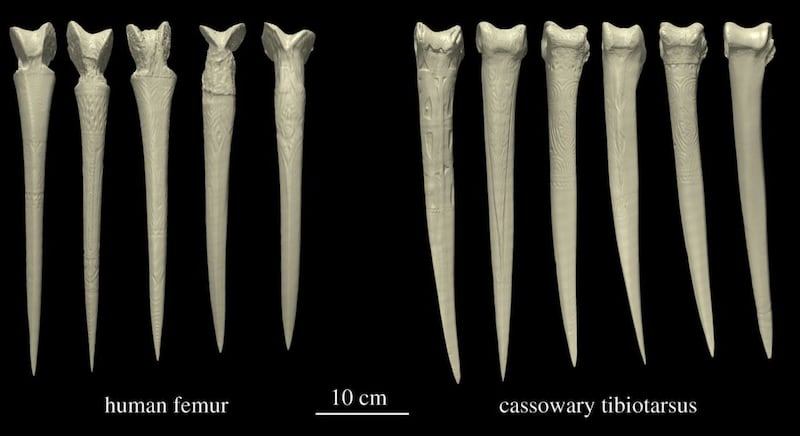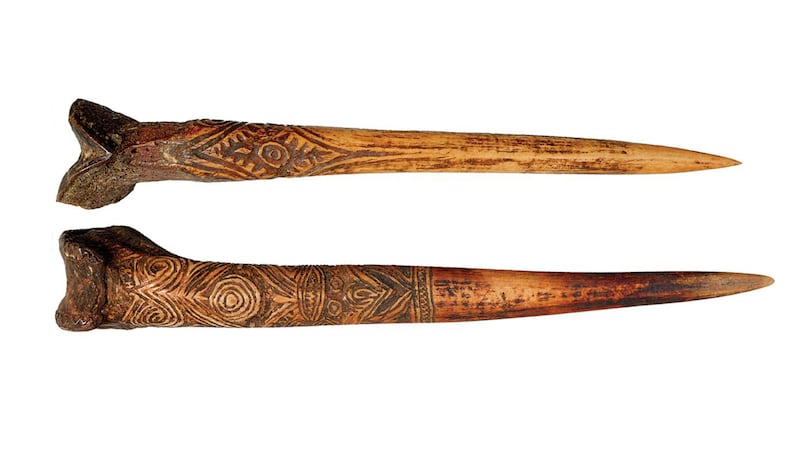Scientists have discovered something you may not want to hear: human bones make great daggers.
A team led by Dartmouth College in the US found human thigh bones would produce the best blades after using computer simulations and imaging techniques along with stabbing tests.
Bone daggers were once used widely in the Sepik region of New Guinea – with common weapons being carved from the leg bones of giant flightless birds called cassowaries.
But weapons that “carried greater social prestige” were human femurs, “shaped from the femora of respected men”.

The researchers analysed 11 bone daggers – 10 human and one cassowary.
In order to preserve the rare human daggers, they used a CT scanner for digital imaging and simulated their stabbing capabilities.
The team tested the cassowary dagger by stabbing it through urethane, which is a synthetic crystalline compound.
The cassowary bones used in daggers are dense – like human bones – compared to the bones of other birds.

However, the team found daggers made from human bones had greater curvature than the cassowary version, and appeared less likely to bend.
The researchers wrote: “We found that human and cassowary bones have similar material properties and that the geometry of human bone daggers results in higher moments of inertia and a greater resistance to bending.
“The greater cross-sectional curvature of human bone daggers indicates superior strength.”
The scientists said in their simulations, human bone daggers were able to withstand about 31% more force than the cassowary daggers before breaking, because of their “superior mechanical performance”.
The results are published in the journal Royal Society Open Science.








